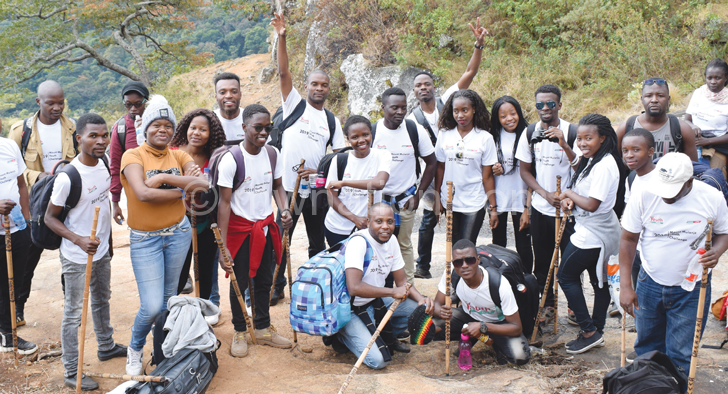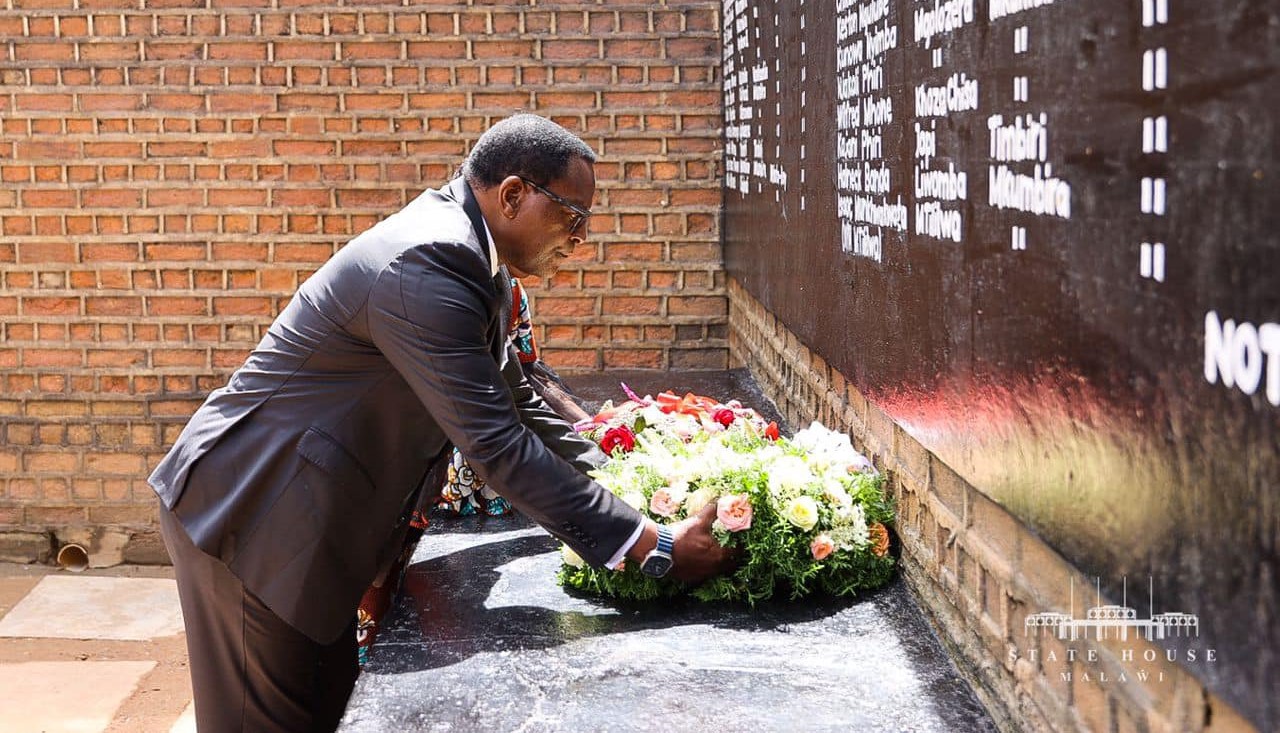Up Mt Mulanje, and back
September is tourism month in Malawi. As the clock ticks towards the month, the destinations are wide. In the national parks and game reserves, the vegetation is dry, making game watching easy. The heat makes a trip to the lake worthwhile. But, as Kondwani Kamiyala finds out, hiking is one forgotten area. He writes:
Friday, August 23 2019. The 30 amateur hikers (nine ladies) came from different backgrounds. Their ages and professions were diverse. Yet, one thing connected them: The pursuit to take challenges and seek adventure.

From nurses to teachers through marketers, sociologists, environmentalists and even students, joined the 2019 Mount Mulanje Challenge under the auspices of the Youth Hub in partnership with Puma Energy Malawi and the Mulanje Mountain Conservation Trust (MMCT).
The destination: Lichenya Peak, perched at about 1 900 metres above sea level. Sapitwa, the highest peak on Africa’s third highest mountain, lies at 3 002 metres above sea level.
So, the climbers gathered at Likhubula CCAP Lodge at the foot of the mountain.
One of the first timers, journalist and marketer Soviet Kabungwe saw the hike as an opportunity to face a challenge.
He observed: “The thought of taking a go at Mulanje Mountain naturally made me feel apprehensive, curious and scared. Mainly, that is because the only ‘mountain’ I ever climbed is a small hill behind my grandfather’s house.”
For Zomba-based sociology of religion scholar Dumisa Mbano, the hike was part of his passion for hiking. “I have always liked hiking. My research work has taken me to South Africa, Norway and other countries. At every opportunity, I have gone hiking.”
Hairdresser Florence Chilinde said she had decided to take the challenge for the second time to meet new friends and network.
“I also wanted to appreciate nature again. I wanted to see the Mulanje cedar,” she said.
So, at 12 noon on the dot, the team hoofed it off for the trek that would take six hours to reach the Lichenya Peak, where they would spend two nights. With a bag on the back, a bottle of water in one hand and a sturdy, artistically carved walking stick in the other, each of the hikers proceeded into the journey that would take them up steep slopes, walk past tranquil rivers and catch breath-taking views of the world below.
A surprise awaited the team even at the onset of the hike. The mountain, gazetted as a forest reserve in 1927, encapsulates the environmental degradation that has hit Malawi hard. Charcoal burning, bushfires, wanton cutting down of trees were a common feature.
Humphreys Kapito, Youth Hub patron, who has hiked the mountain since his primary school days in the district, was worried.
“It is worrisome that the deforestation is just too much. What are we doing to the mountain? People are burning charcoal just like that. No fear at all,” said Kapito.
Tour guide Helix Matope was equally perplexed.
“It is too bad for us as tour guides. The tourists come to see the vegetation and even animals, apart from the views and weather. This is getting out of hand,” said Matope.
There are 18 huts on Mulanje Mountain where hikers spend their nights. The Lichenya Hut is about a kilometre from the oldest hut, the CCAP Hut. The Chambe Hut is on the adjacent peak, while Chisepo, which is the hut closest to Sapitwa is three hours away.
It was around 6pm when the last of the members of the crew arrived at the hut, built from cedar wood. The Mulanje cedar, Malawi’s national tree, faces extinction, according to the International Union for Conservation of Nature (IUCN).
Up there, it was cold, too cold. The members put on their warmest of clothes, gathered at the fireplace in the hut while another group sat outside, around a campfire. Those outside were listening to heart-rending stories from the forestry guard on the daunting task of warding off illegal loggers.
The only other guests in the hut were a Dutch couple, who were on their way down from Sapitwa, having spent five days on the mountain. For the two, it was a totally new experience.
Gerlof Steen said they learned of the Island in the Sky from friends who previously showed them photos. “It is sad that there are a lot of bushfires destroying the natural environment. We were at the Nyika Plateau and this seems to be a problem there as well,” he said.
The nights up the mountain are too cold, with some sleeping with knitted syndicate hats, gloves and jumpers on. But, as they say, every dreary night must come to an end, so did that one. The morning was to get to know each other better for most of the group were total strangers.
In the afternoon, a visit to the Linje Pool on the peak was on the menu. There is no phone network at the peak, except at Linje. Everyone was anxious to let family and friends know they had not been taken up by the Mulanje spirits, and, for that matter, post statuses and selfies on social media about the hike.
Linje Pools presented its own surprises. Here is the grandeur of an expansive area of upland grass, tranquil and crystal clear rivers and rolling hills. That is not all. The greatest feature here is the earth crater, which presents a very deep view of the Mulanje tea estates and road network far below. For your imagination, it is like you are looking straight at Mulanje on Google Maps!
One can’t talk of the Mulanje Massif without mentioning about the spirits. Spirits that would take you up.
Kondwani Chamwala, MMCT’s publicity and civic education officer cleared the mist.
“To avoid getting lost you need a guide. We have a case of the Dutch national Linda Pronk and Brazillian Gabriel Bushmann who tried to go to Sapitwa without guides. Gabriel’s body was found, but Pronk’s body has never been found,” he said.
Chamwala knows Mulanje Mountain like the back of his palm. So, he chose that the group make their descent using the Boma Path. Here was a tedious experience. For much of the trek down, one had to shuffle on one’s bottom. Where the slope was not so steep, one had to use the sturdy walking stick they bought at the onset of the hike.
No wonder, they all called the seven-hour route ‘khwekhwerere’.
According to Youth Hub chairman, Daniel Gushu, the group is preparing for the 2020 Mount Mulanje Challenge with one goal: Reaching Sapitwa.
“The hiking challenge shows how to face life. We also learn through it how to deal with the unpredictable and enjoy what God has given us,” he said Gushu. n





